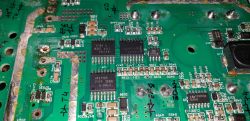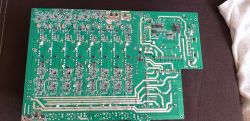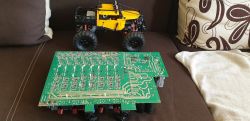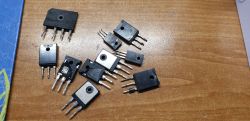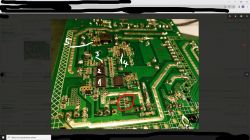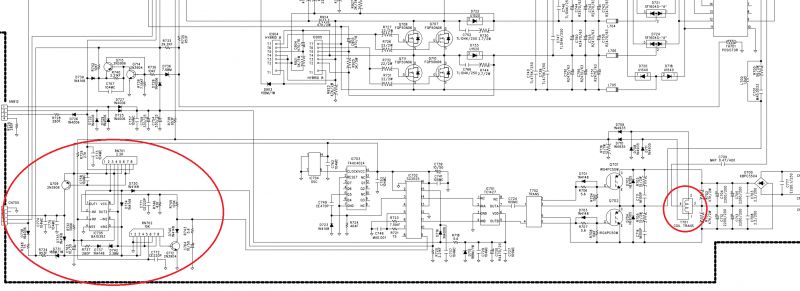Buddy, everything has been said by me and not only me on this topic:
- the repair is pointless due to a completely incorrect construction, incorrect assumptions of the constructor, misinterpretation of single border parameters detached from other elements as nominal parameters
- you can fix something that has been properly constructed and functioned properly at least once .
Modifying the system, modernizing it is no longer a repair, but a lottery of constructing something completely different, resulting from the knowledge and skills of a new designer.
Due to the system used, assembly and the degree of packing of this amplifier, modernizations are not possible
- no space for new or different solutions. An example are the already mentioned Gretz fast monolithic bridges, which cannot be replaced or replaced correctly, in line with the art of designing, and replaced with single diodes.
Your statement about the use of additional protection that you indicated from another design clearly indicates that you are not familiar with the design of the subjective amplifier in this topic. After all, it has all the protections, only that it is not effective due to the design and components used. The weak link is the transformer itself, incorrectly calculated and wound up. In relation to the indicated InterM structure, it has even more of them implemented at individual stages (blocks) of the structure. (
It should be mentioned that InterM products also became infamous among acoustics - just read the reviews about this equipment. )
koziorozec wrote: Why this profitability discussion?
I personally am very happy with this topic, I have several such amplifiers and I am happy to learn power supply topology trying to fix it , I can afford to make fireworks, so despite the financial unreasonableness of lifting this amplifier gives me great joy and learn a lot from it, which is invaluable.
You yourself, my friend, so you replied:
- you are aware of the complete irrationality of all attempts to repair the amplifier, which end up only with another damage to the newly installed components. If that's a way for you to dispose of your own funds, fine.
But do not confuse two concepts here and do not equate them:
- fun filled with free time a
- repair, effective repair restoring the amplifier to full serviceability according to the assigned standards and nominal parameters provided by the manufacturer (which, by the way, this model never achieved).
My rational, objective, and not critical approach to this design results from my practical contact with many new specimens, which from the very beginning of their proper operation showed defects and even damaged spontaneously at loads much lower than the nominal one. They also result from the knowledge of the sound market in which there is no place for this type of unreliable "inventions". To sum up, no serious, self-respecting acoustician wants to and will not use this type of equipment.
So what is the point of repairing the equipment, apart from the didactic aspect mentioned by you, of course?
Only, in my opinion, and probably every electronics, you can learn from properly designed and operating structures, based on reliable theoretical knowledge. Especially as it is a starting learning.
Hence my warnings of less experienced colleagues on this subject not to waste time and resources.
koziorozec wrote: The current test is done by a clever transformer, the rest rather simple, what do you think
This is not a "clever transformer", but a current transformer. And this is not a study, but a typical feedback. A similar solution is commonly used in various types of power supply systems.
 ). Unfortunately, these amplifiers are a ticking time bomb (you never know when it will fall and you can trust them on average). As for the voltage at the output, I probably wrote earlier - for me it was caused by a failure of one of the voltage pull-up resistors at the control transistors. I do not remember which one exactly, but one of its pins was connected to the smd transistor in the above mentioned. surroundings. It's worth starting your search there.
). Unfortunately, these amplifiers are a ticking time bomb (you never know when it will fall and you can trust them on average). As for the voltage at the output, I probably wrote earlier - for me it was caused by a failure of one of the voltage pull-up resistors at the control transistors. I do not remember which one exactly, but one of its pins was connected to the smd transistor in the above mentioned. surroundings. It's worth starting your search there.



